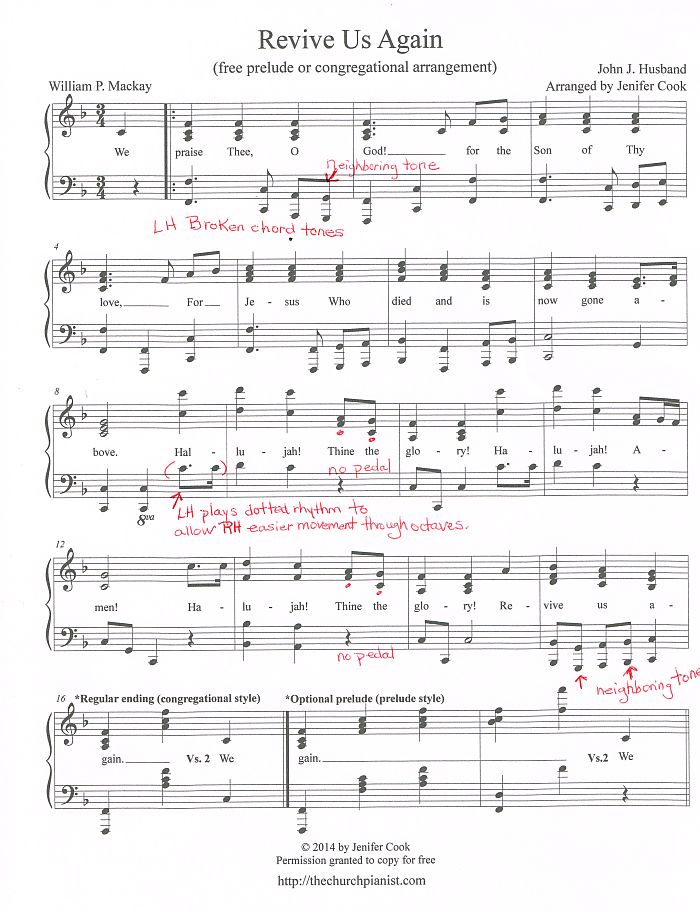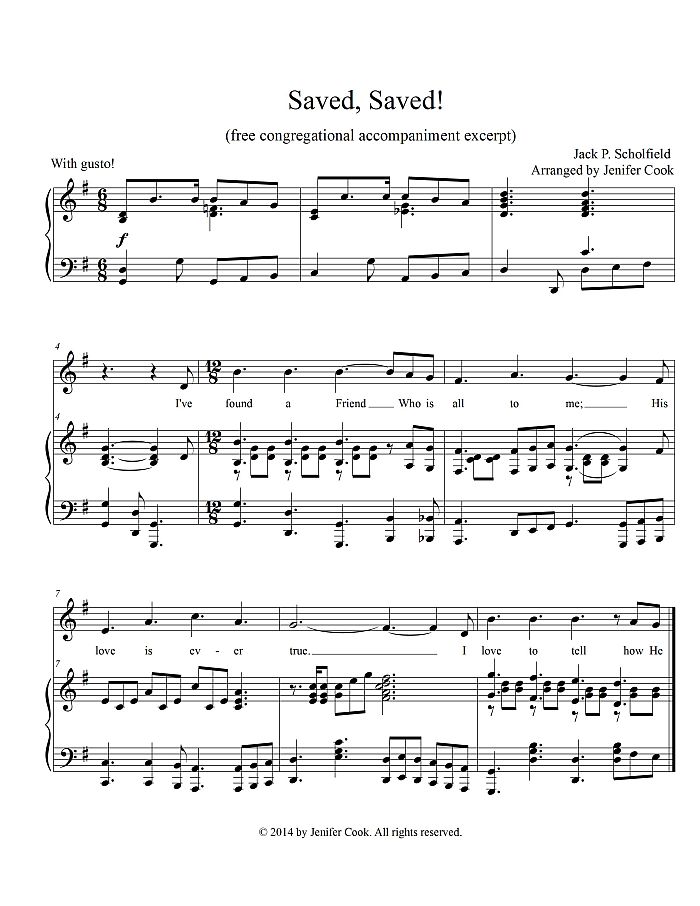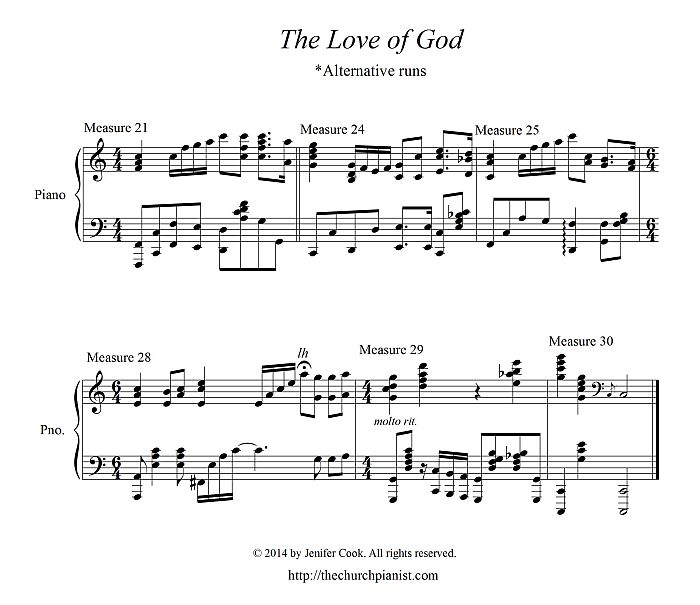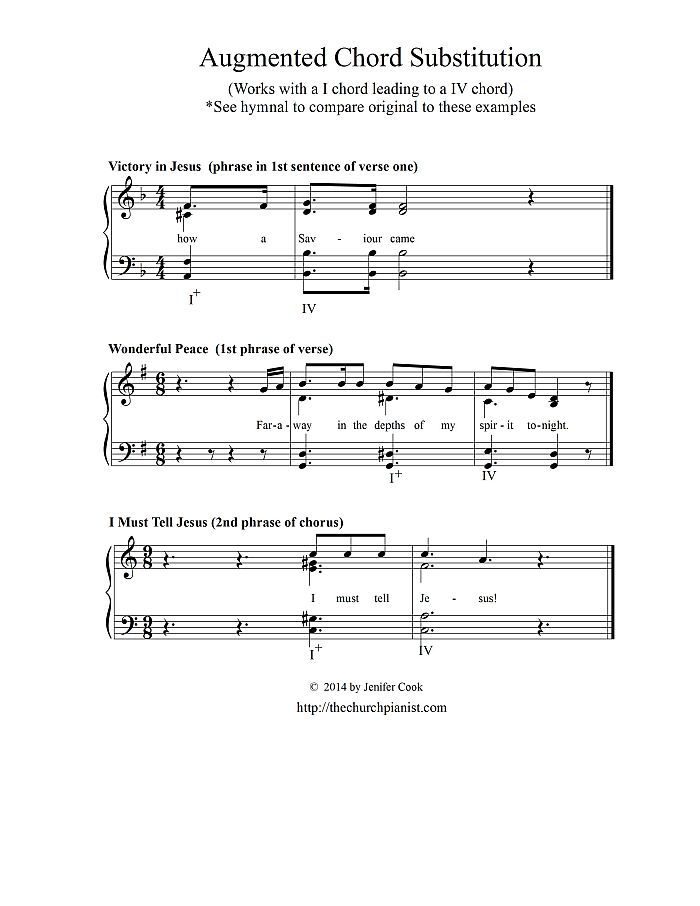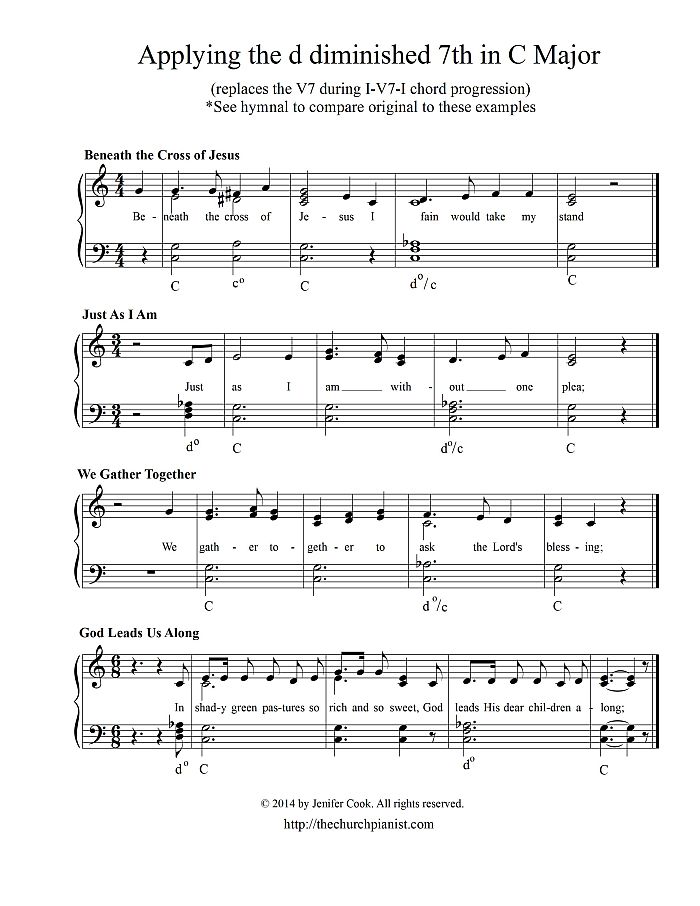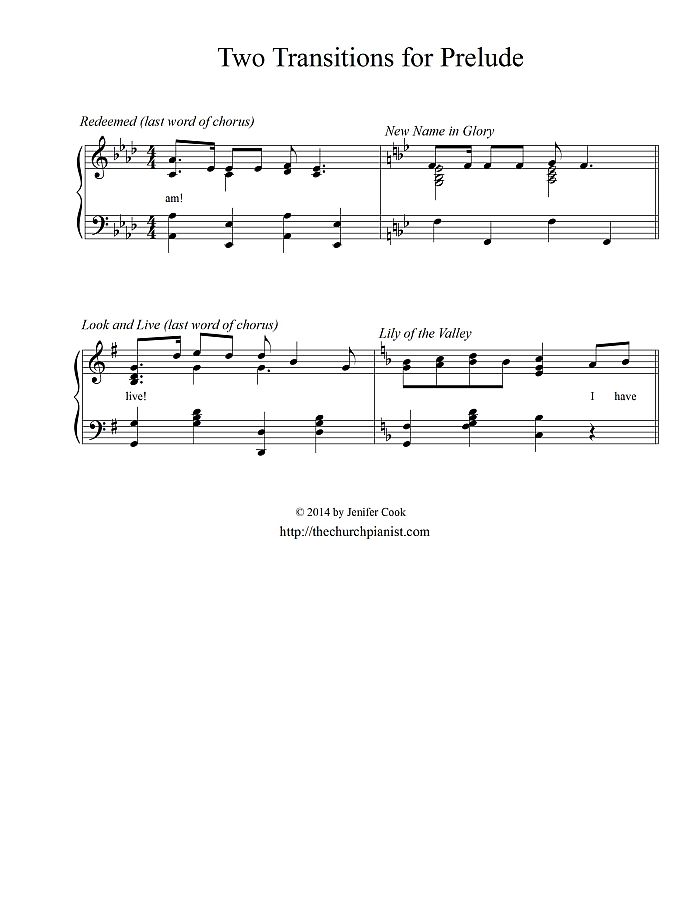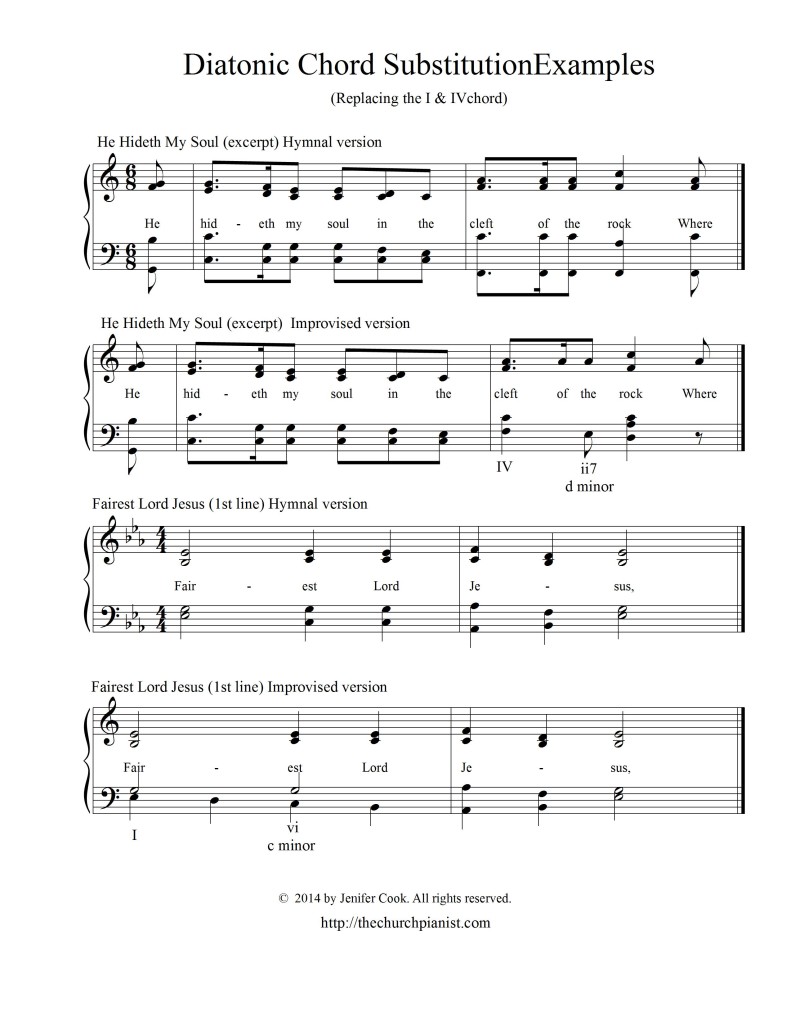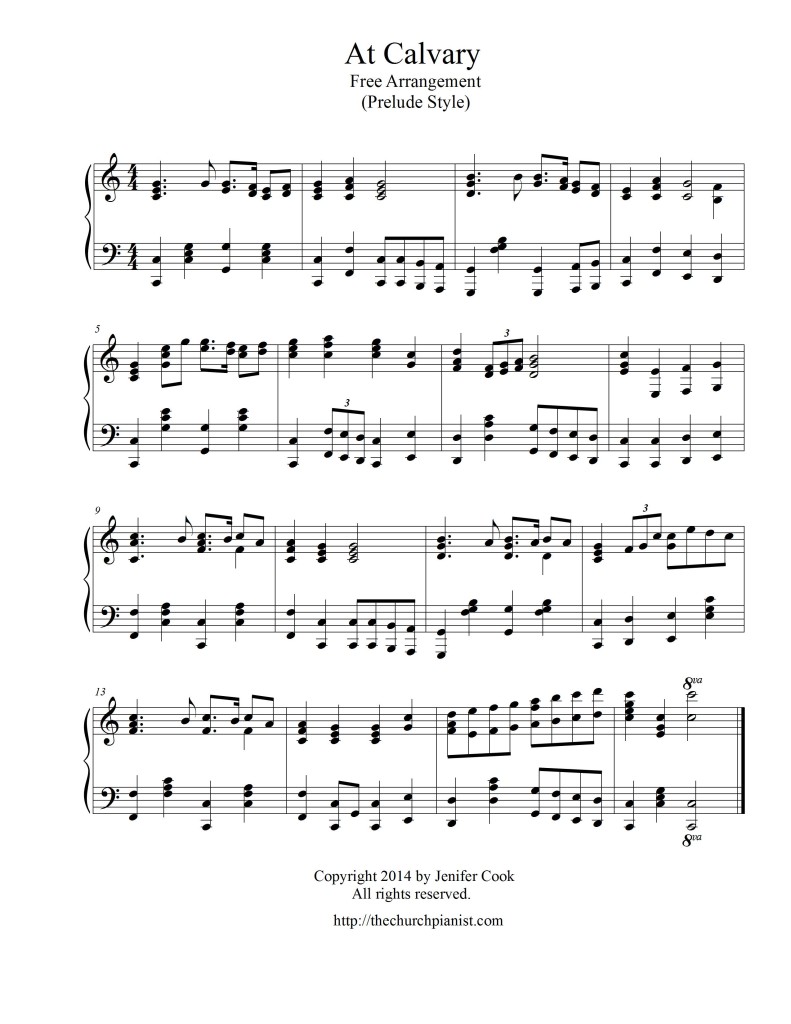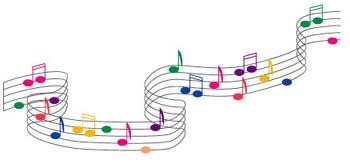
Church pianists enjoying bringing hymns to life by adding different chords! A recent question from one of my readers has created the perfect opportunity for me to share tips on chord substitutions….a topic I’ve been wanting to deal with for quite some time. Chord substitutions can add such color to a song! It’s a very B-R-O-A-D topic; meaning….there’s an endless supply of chord possibilities in any given key!
Reader’s Question:
“I have been using various resources trying to learn more about theory, but I haven’t found any that go beyond a basic level.
For example, I know what augmented and diminished chords are, but I don’t know how to use them or how they fit into functional harmony. In analyzing your arrangements, I have noticed you use a lot of different kinds of chords, such as chords with altered bass notes or a I-ii half diminished-I-etc. progression for introductions.
How did you learn how to use all these? Do you have any recommendations for resources that would teach me more? Any advice would be appreciated!”
Ashley
Hi Ashley,
How did I learn to use different chords from the written music? You won’t like my answer 😉 I play them by ear…basically whatever sounds right. I do know chord theory but don’t think about theory application when playing….I just….play 😉 (Music writer’s confession: I don’t claim to be an expert theorist.)
For everyone’s benefit…the “different” chords we’re discussing are called chord substitutions. A chord substitution occurs when replacing a chord with a different chord.
Easiest Chord Substitution for Starters…
To replace a major chord within a key…use the chord a 3rd above or below the root note of a major chord. (The major chords within any key is the I, IV and V).
The I chord in the key of C Major is the C chord (CEG). Now, what note is a 3rd above C ? E…so the e minor chord (EGB) within the C scale can be used as a substitution as long as it “sounds” good within the occurring chord path (progression) of the song. Count a 3rd below C and you find A. The A minor chord (ACE) is the second choice for a C major chord substitution.
Two observations about these two chord substitution choices:
1. They’re both minor
2. They each have two notes in common with the chord being replaced
There are other types of chord substitutions but wanted to start with the easiest kind.
Extra Information:
1.The chord substitution just described above (3rd above or 3rd below) is called the Diatonic Substitution. A diatonic chord substitution occurs when using different notes within a scale. It’s the most natural form of chord substitution because no note alterations take place; just using what ingredients are already available within that key 😉
2. The key signature and melody of any song dictates what chord(s) can be used.
~~Next article will show examples of the Diatonic chord substitution~~

Special Note!
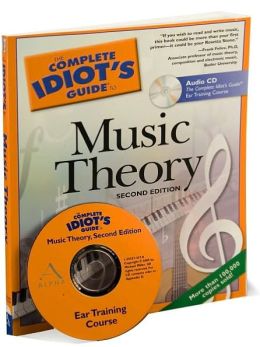
Related article on Chord Substitutions
